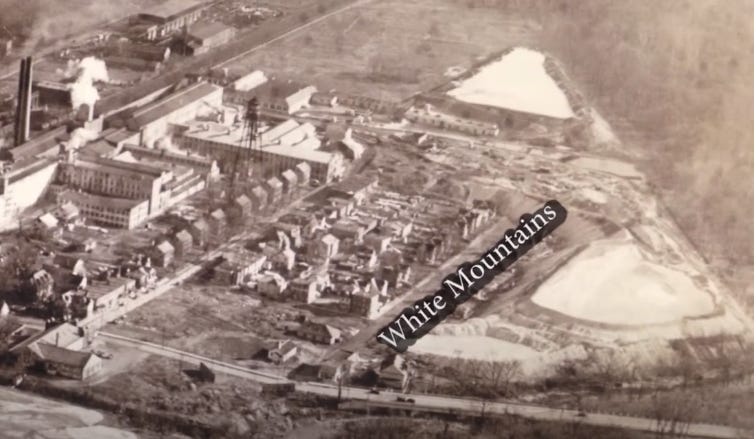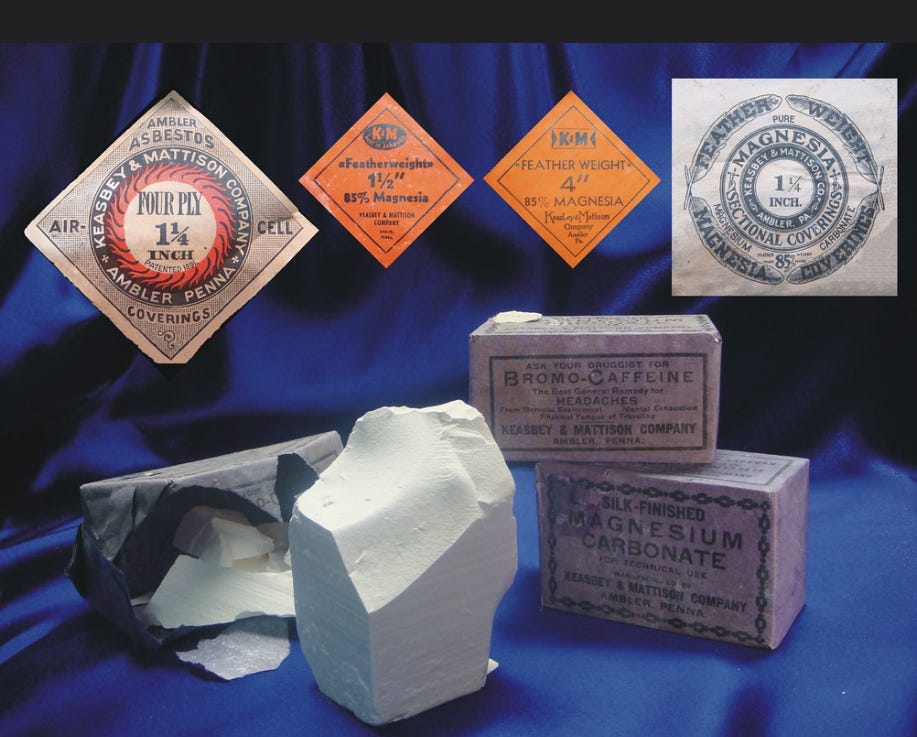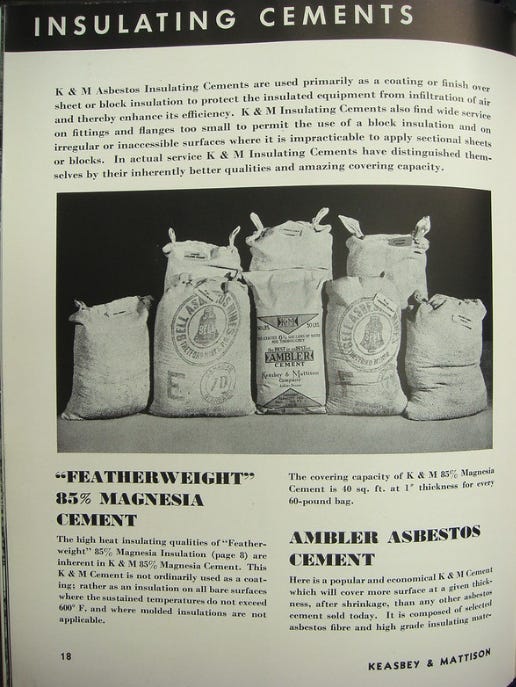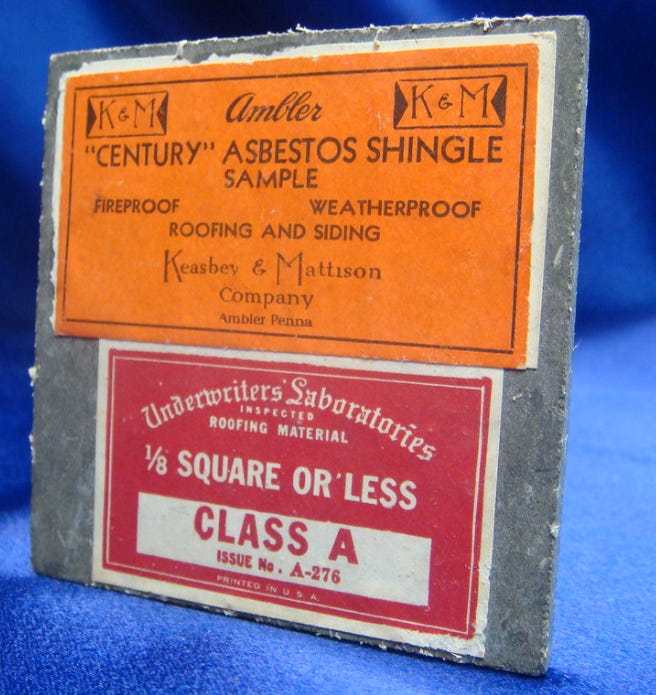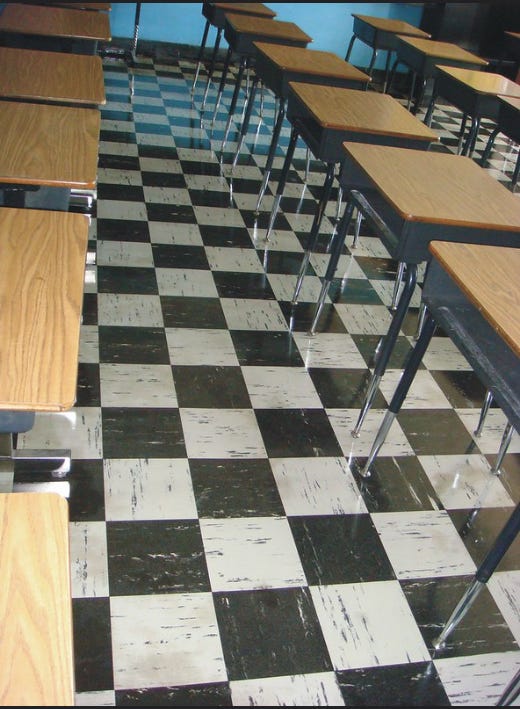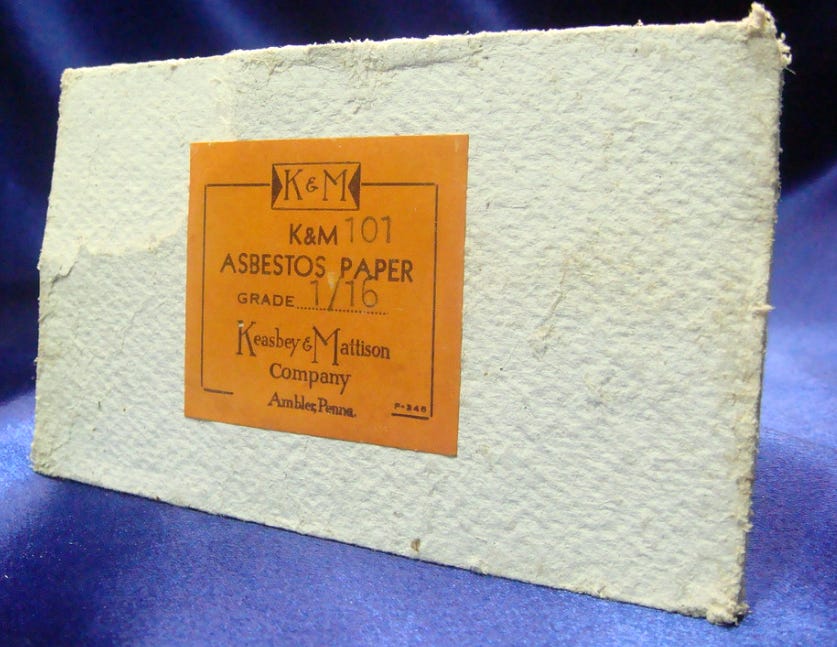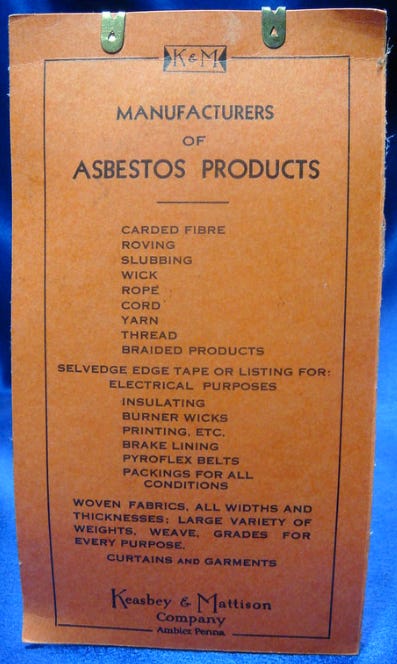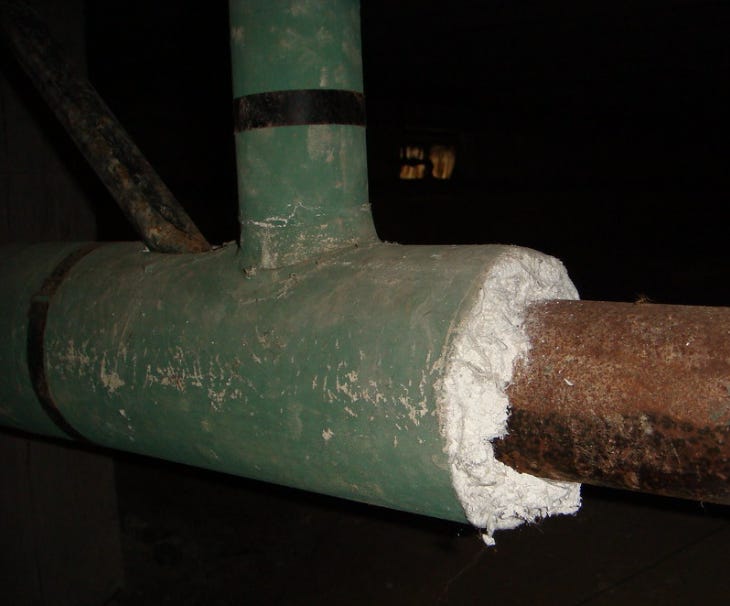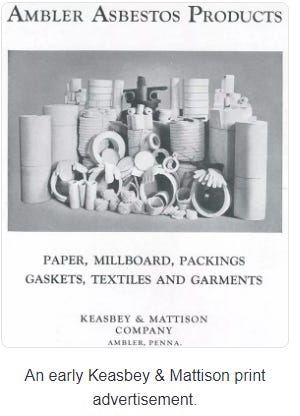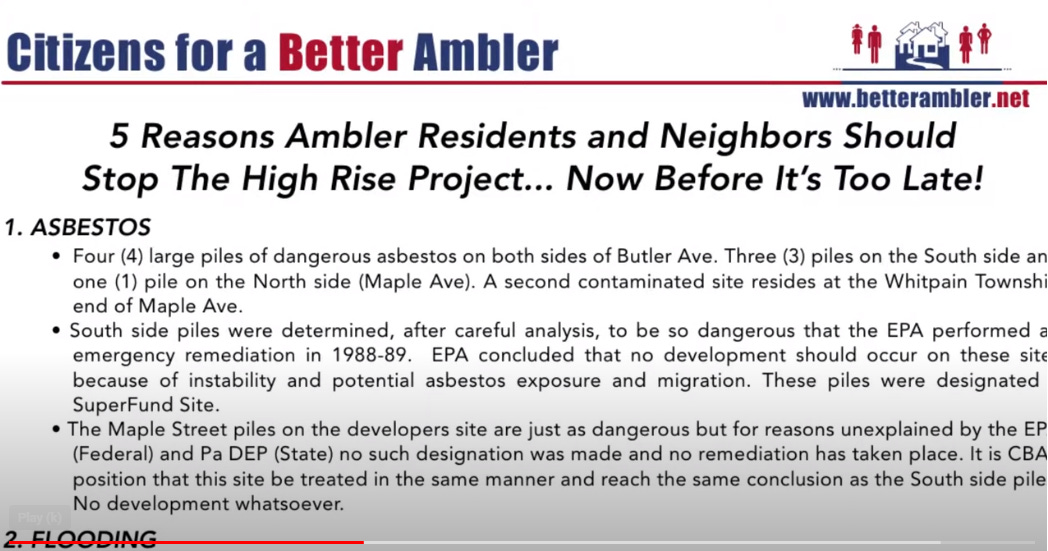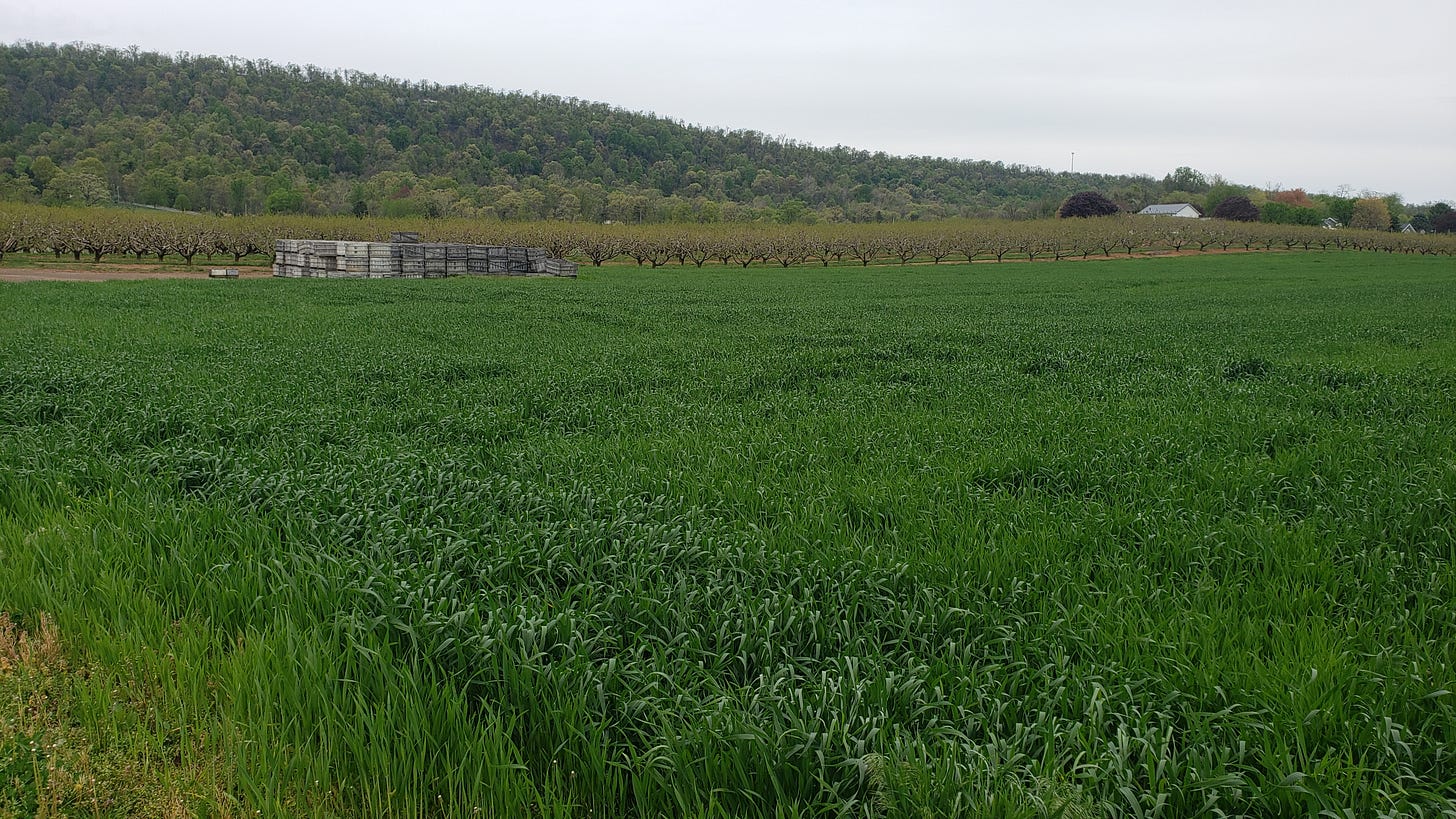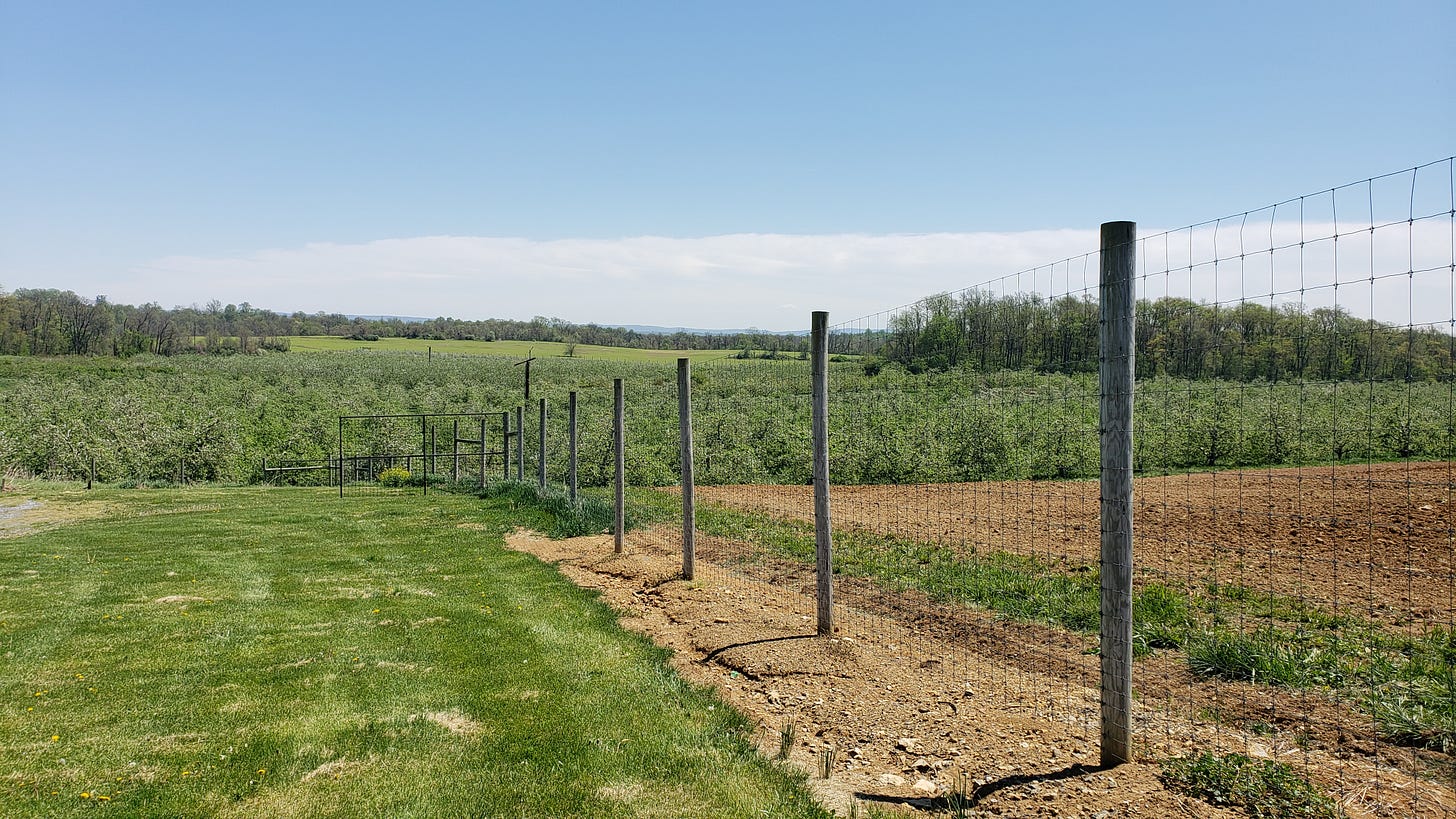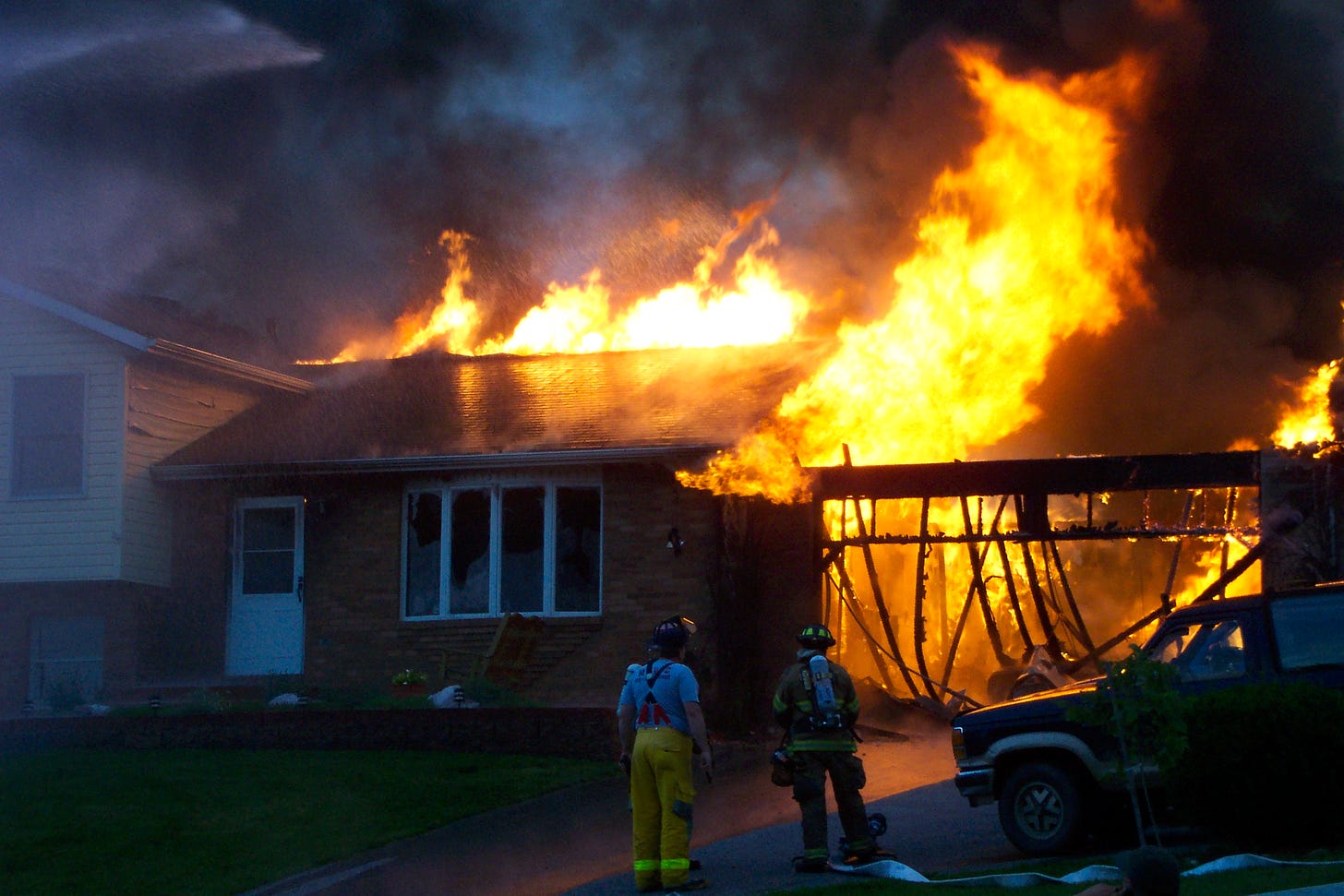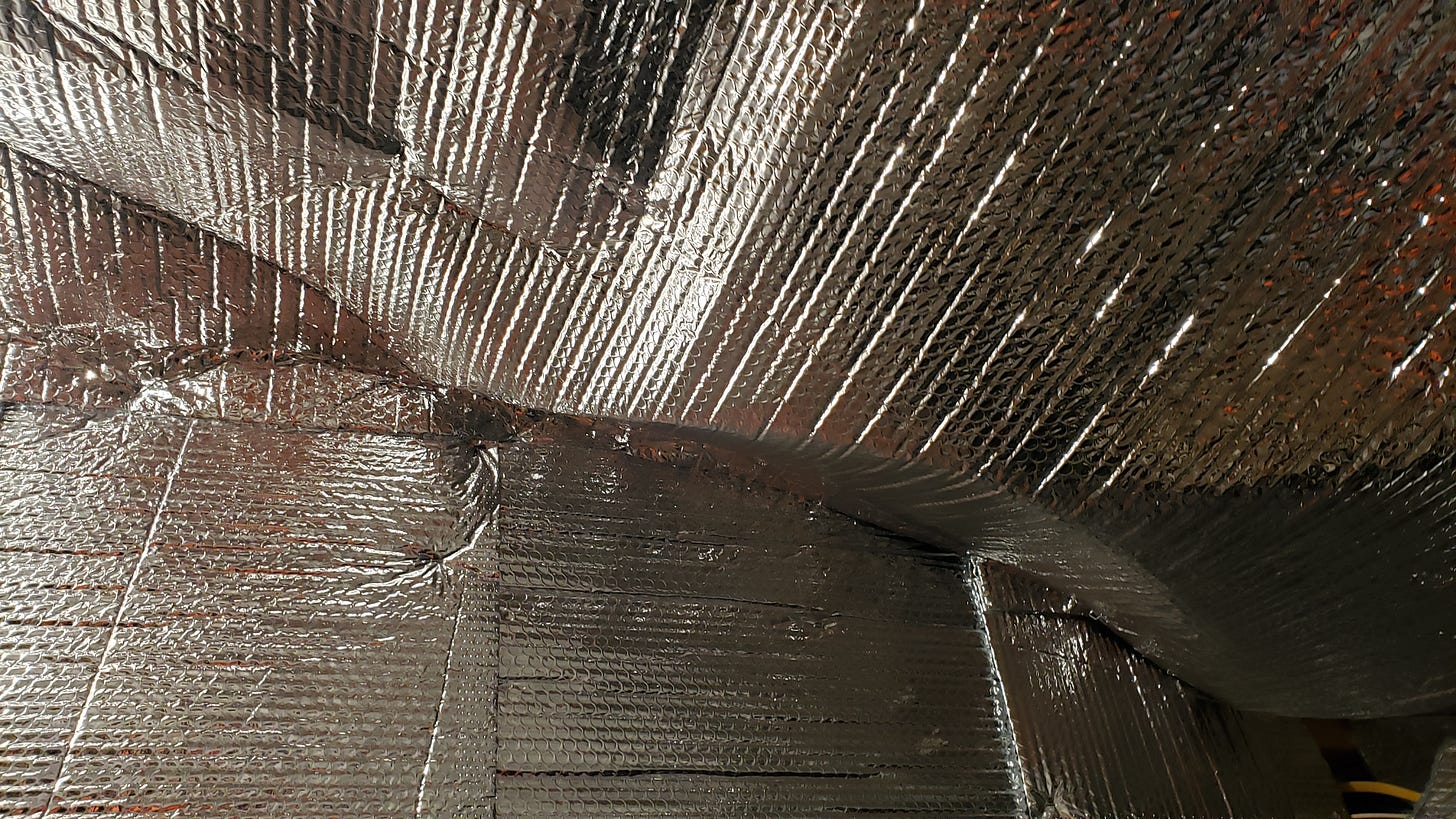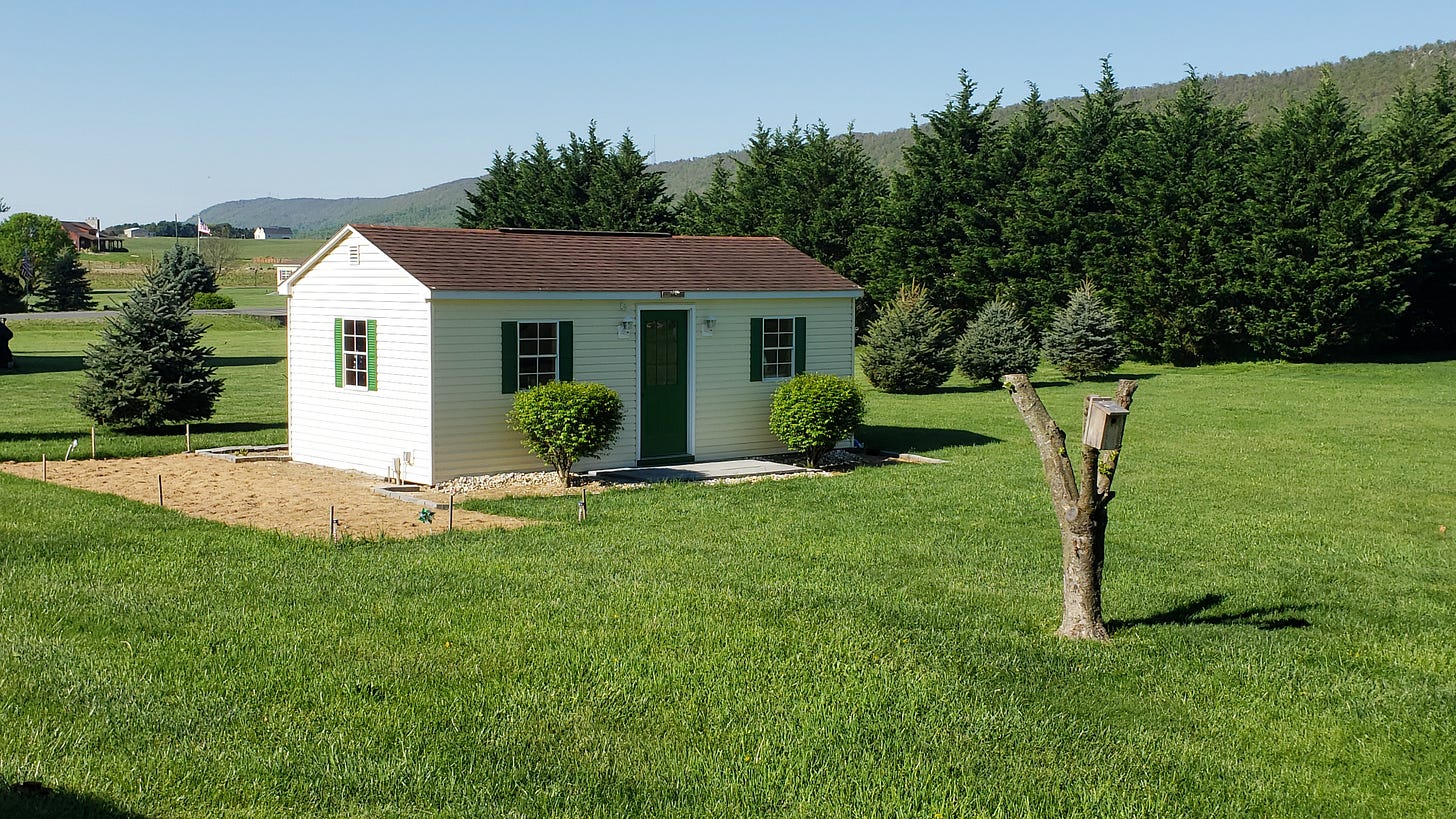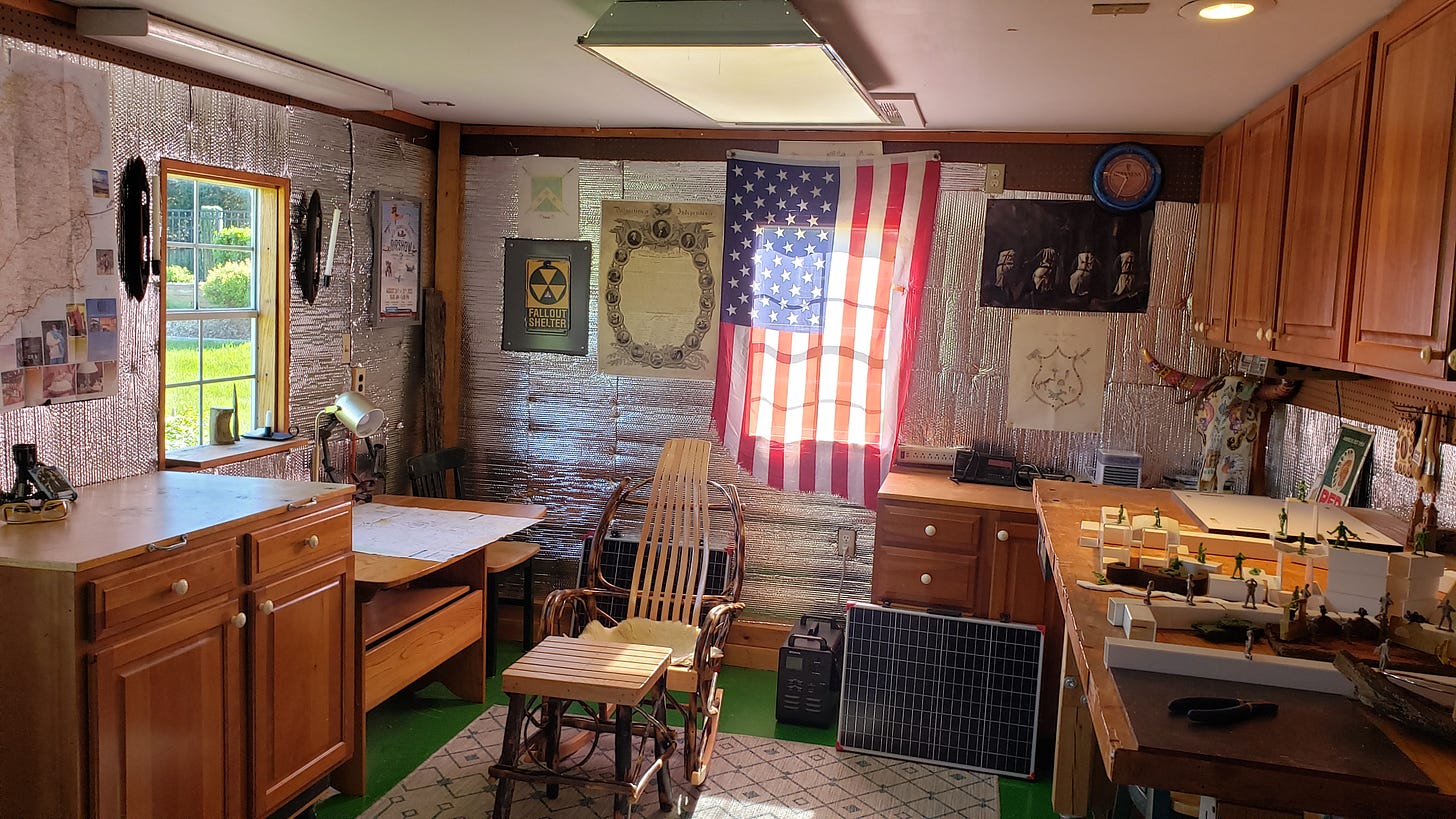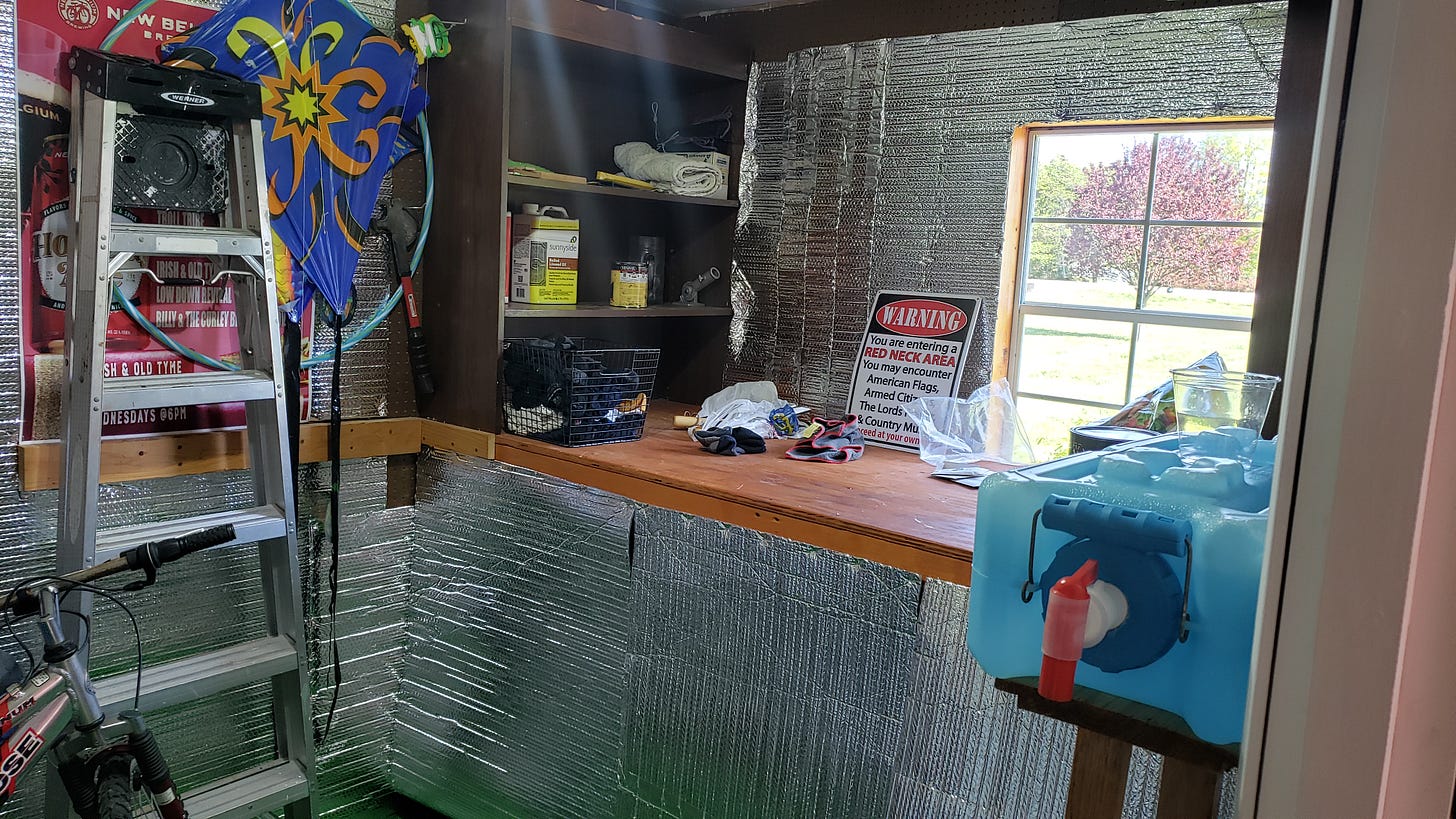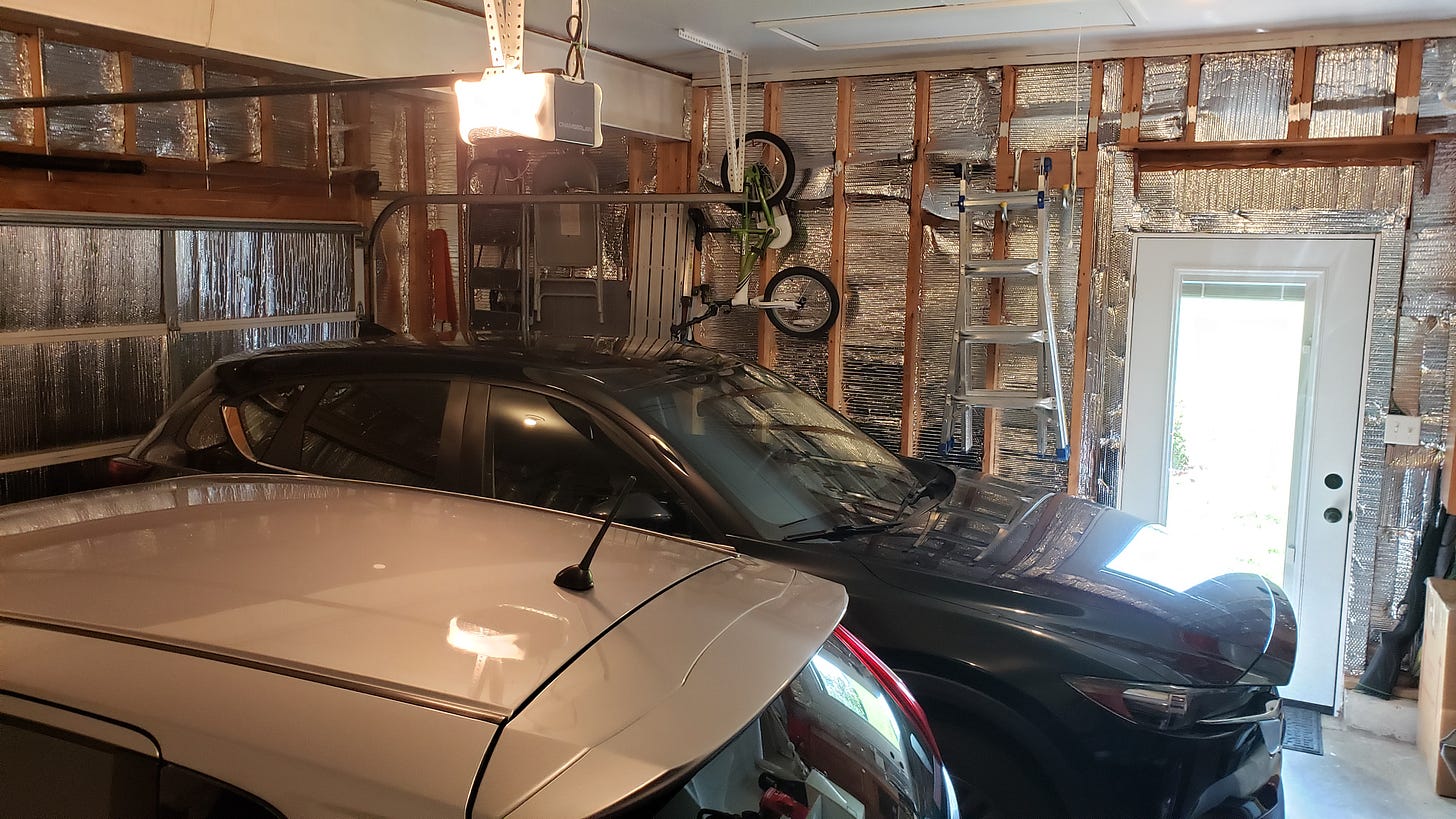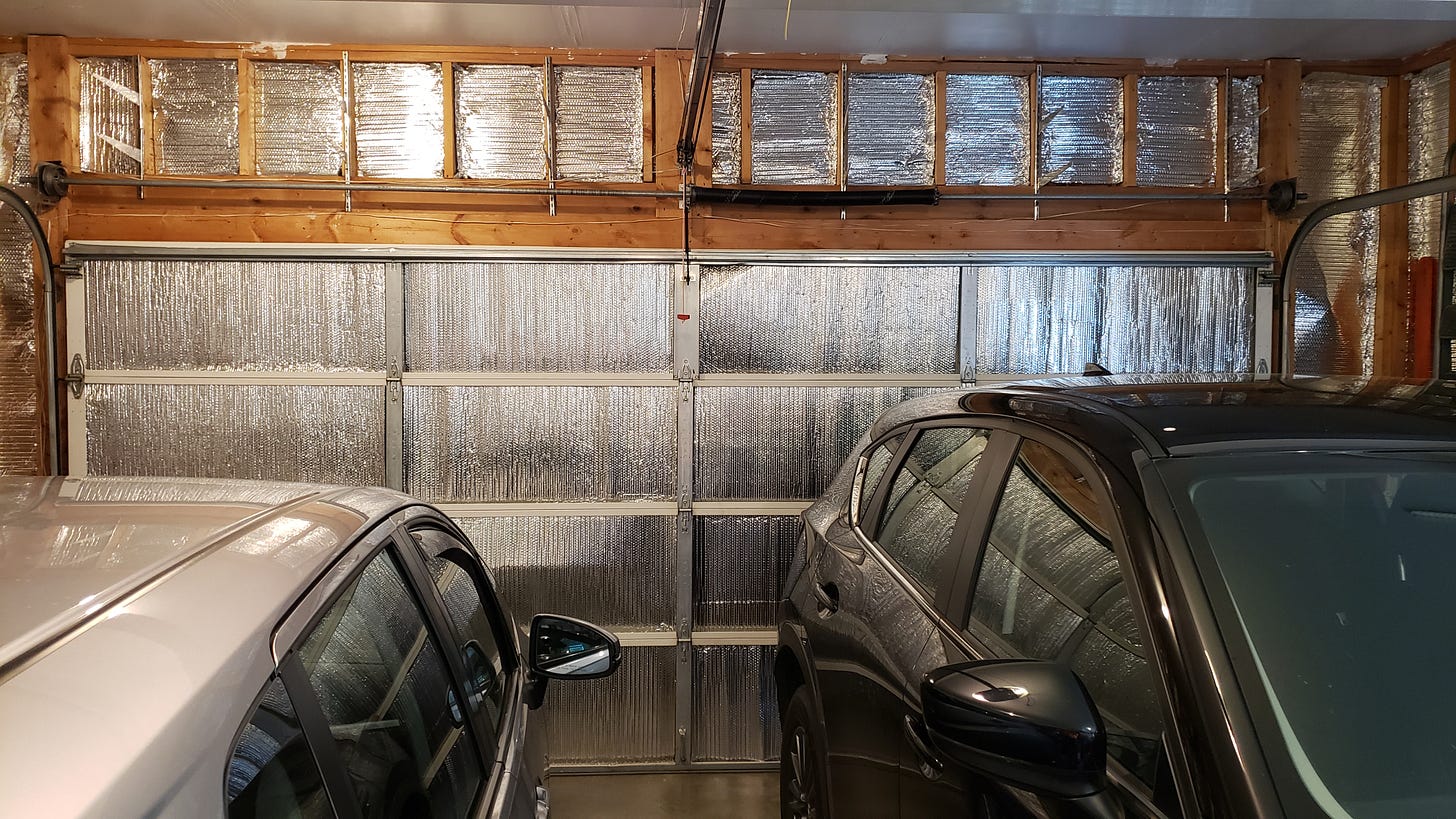Reflectix: Civil Defense Hack
Save Money, Mitigate EMP, Be Warm, Cool, and Cozy in your Home for Years
Precis: Line your basement, emergency supply room, or other safe enclosure to protect your electronic devices from EMP attack with the Duct Tape of durable, practical, preparedness material: Reflectix.
My Childhood House and Exposure to Asbestos in Ambler, PA
I grew up from one to three in Germantown and three to twelve in West Oak Lane, PA, but my parents moved us when the gangs like the “Zulu Nation” and others tried to kill us when we came home from Simons Ice Skating Rink. Like all good parents, mine moved us to a safer locale, Ambler, PA in 1968 for a brighter American future.
What my parents did not know is that Ambler would eventually be declared one of the largest EPA Superfund sites in the U.S. because it was once owned and dominated by the Keasbey and Mattison (K&M) factory that manufactured a wonder insulating and fire retardant material from asbestos.
When we were kids, we would ice skate on the huge pond Mattison built near his castle that was a Catholic orphanage when we lived there. We would also sled on the fun asbestos white mountains that looked like snow near the abandoned asbestos factory. The discards from the extensive asbestos production lines were thrown out back and had broken down over the decades and turned to powder, the soft white powder we would sled on in the 1960’s and 1970’s.
Ambler was the largest producer of asbestos in the world once, and that had a huge impact on many American lives, including my own.
Richard Mattison was born in 1851, the son of a Pennsylvania Quaker farmer. He went on to earn top honors at the Philadelphia College of Pharmacy and the University of Pennsylvania’s medical school. During his years at pharmacy school Mattison befriended the wealthy Henry Keasbey, who provided the necessary capital to jump-start Keasbey and Mattison Company (K&M) in 1873. K&M developed several patent medicines—chemical cocktails often with fanciful names and equally fanciful claims—that became best sellers, the most famous being Bromo Caffeine, for treating anxiety, and Alkalithia, for treating rheumatism.
The story has it that Mattison’s interest in asbestos, the mineral that would make him one of the Gilded Age’s nouveau riche, was based on chance. In the 1880s, after experimenting with several minerals and chemicals, including milk of magnesia, Mattison hit the jackpot when he found that mixing magnesium carbonate with asbestos produced an insulation fabric that could be wrapped around steam pipes and so save home and building owners on fuel costs. Mattison’s professional passion gradually shifted to devising and adopting every possible use for asbestos.
In Ambler, Mattison discovered the perfect elements for his empire: a steady supply of spring water, a railroad that could deliver asbestos from mines up in Quebec, and a rich supply of limestone nearby for medical ingredients and for building. In 1882 Mattison and Keasbey relocated their company to the feeble town and began transforming it from a collapsing agricultural outpost into a powerful industrial machine that would earn Mattison the sobriquet “Asbestos King.”
Both the Romans and the Greeks used asbestos—a family of silicon- and oxygen-based fibrous minerals whose combination of strength, fire resistance, softness, and pliability made them highly desirable. The widespread commercial use of asbestos began only in the 1860s after New York–based building contractor Henry Ward Johns came up with flame-resistant tar paper. The roofing material proved invaluable in preventing building fires, a widespread problem in densely settled cities. In the 1870s the discovery and development of asbestos mines in Quebec enabled large-scale production of asbestos fiber, meeting a growing demand for its use as an insulator. Asbestos was spun into cloth and wrapped around boilers on ships and on steam locomotives; it was turned into oven mitts and protective aprons and coats. Ultimately, asbestos was used in an estimated 3,000 different products, from chalkboards to floor tiles to plaster.
In 1896 Mattison built the nation’s first asbestos textile plant in Ambler. Its output was prodigious. In addition to manufacturing insulation for power-generating boiler houses and steam locomotives, the factory produced fireproof curtains for homes and theaters and brake linings for a new generation of faster automobiles in which asbestos replaced fast-wearing leather. But the company’s most lucrative product was its asbestos-cement fireproof roof shingles, which Mattison proclaimed in advertisements would result in a roof that “outlasts the building, without paint or repairs.” By the turn of the century sales from asbestos products outperformed those of the company’s pharmaceuticals. In 1906 Mattison bought a 120-acre asbestos mine in Quebec to meet demand for chrysotile, a form of asbestos whose flexibility was ideal for weaving into textiles.
Asbestos and patent medicines made Mattison fantastically wealthy. To satisfy his lifelong love of Gothic architecture, beginning in the mid-1880s Mattison arranged for the passage of stone artisans and laborers from southern Italy. These men built not only his turreted manor home on a 400-acre estate that he christened Lindenwold but also the residences for all of Mattison’s employees. He kept rents cheap for his employees and salaries low. Mattison owned the borough bank and all of Ambler’s utility companies, and his money funded construction of the town’s library and opera house.
K&M’s success continued throughout the early 1900s. During World War I the company supplied insulation for steamships, brake pads for army vehicles, and strap linings for soldiers’ helmets. But the stock market crash of 1929 put an end to the Asbestos King’s reign. Not long before the crash, Mattison had bought Keasbey’s interest in the company by handing him a $4 million lump-sum payment. The timing couldn’t have been worse: the crash in October left him without the means to sustain operations at his factories in Ambler and elsewhere. In 1931 Mattison’s creditors removed him as K&M president. The king vacated his castle, let go of most of his 100-plus estate staff, and moved into one of the executive mansions. In 1934, two years before Mattison died, the company he founded was sold to the British asbestos-manufacturing behemoth Turner and Newall.
K&M continued to make asbestos products. With the onset of World War II demand soared for insulation and fireproof material for navy ships, army jeeps, and other combat-related paraphernalia. The need for these materials was so great that authorities prohibited all non-essential asbestos use. In the economic boom that followed the war, new construction across the country sustained demand. As the industry held steady, so did Ambler.
Magnesium carbonate originally was a pharmaceutical to relieve headaches.
Then, the good pharmacists began to find all kinds of uses for magnesium carbonate mixed with the wonder fire proofing material asbestos.
Mattison discovered that mixing magnesium carbonate and asbestos produces an insulating fabric that significantly cuts fuel costs when wrapped around steam pipes in homes and buildings. He invented all kinds of uses for asbestos that made him a wealthy man. And to be fair, he built beautiful houses for his professionals and Italian immigrant workers to live in and took care of them well. Those beautiful dwellings still stand proudly.
But, unfortunately, K&M’s bad manufacturing practice, many of which they did not understand at the time, was to dump the defective products in the back of the factory property that broke down eventually and turned into the toxic white power mountains we sledded on as kids.
We did not know it was asbestos and that it could kill us. That discovery came later when the Italians who were brought over from Southern Italy to work in the Keasbey & Madison factory making asbestos pipes began to die. It took decades to discover many of the old Italians who worked at the Keasbey & Mattison factory died of leukemia, mesothelioma, and asbestos poisoning due to the impact of breathing asbestos over time.
As I tracked that asbestos reality as it unfolded and came to know how dangerous asbestos insulation was to life, and as I was aware of how seriously asbestos affects health, I searched for alternative safe insulation material except for asbestos (usually the pink cotton candy batting) when I fixed up my first house.
When I worked at the Solar Energy Research Institute in Golden, CO in 1979 on an internship when I was at the Johns Hopkins School of International Studies, I saw a version of Reflectix in the lab as they experimented with various materials to build energy efficient solar panels. The engineering principal in one demonstration material made sense to me. Aluminum on both sides to reflect heat out and keep heat and air conditioning in with bubble pack in the middle. Interesting and practical idea, but it was only in the lab at that point.
My First House Use of Reflectix
Later, while researching insulation material for my recently purchases house, I knew of the horrors of asbestos and the dangers of the pink cotton candy insulation material then, and now, that was so popular despite the danger.
Much to my surprise, I went to the hardware store and lo and behold, Reflectix!!! was now a commercial product!
I purchased a number of roles and headed home to insulate my house’s attic and basement. In time, I recouped my initial investment in that I saved serious money as it reduced my heating costs in half and my air conditioning costs by two thirds.
I had two skylights in that townhouse and two French glass doors. Both let the sun beat in all day long and made the house an oven. So, I took plywood sheets and made doors for both French doors. I covered the outside sections of the doors with Reflectix to reflect the heat back out of the house. I also took two sheets of Reflectix and pushed it into the skylights.
Result? We rarely used our air conditioning whereas my neighbors kept theirs on 24/7. My air conditioning bills were one-third of what my neighbors paid.
Then 9/11 happened. Based on my civil defense experience, I knew nothing would be the same and I knew we had to move. As for several years we had Section 8 drug dealers a few doors away dealing drugs all night long to a parade of cars picking up illegal drugs playing rap at 110 decibels, and as they threatened me multiple times when I brought my kids home from day care, and we had lived there for 11 years in Germantown, MD and watched a good family neighborhood go down due to Section 8 houses popping up, I was ready to move. As there were two active MS-13 gangs nearby, that was another reason.
One night, they broke whiskey and beer bottles on my doorstep to intimidate. I gathered them up with my bare hands and returned them in a box on their doorstep. Later, I was in the bathroom when my then 6-year old came in and said, “Daddy, those bad men are yelling at mommy!”
That is all I had to hear. I ran outside and said, “Fellas, you’ve been threatening me and my family for years. Here I am! I count five outside and I know you have at least another seven inside! You scream you are going to f*** me up each day when I bring my kids home from school…well…here is your chance. I’m here.”
They were in shock that I confronted them after several years of listening to their threats. My wife was not happy. “Get back inside the house! They love to fight and go to prison. You have a family to take care of! Get back in the house!”
My Irish was up, but she was right. I returned to the house as they cursed me. But that night, they broke the lock on my front door. As I was repairing it the next day, they threw a rock and an egg that just missed my head. When I turned, they ran back inside their drug den.
I started laughing and laughing. They had won. I had to work to provide for my growing family and I had to pay taxes. They did neither. One of their 15-year old girls sat there all day collecting welfare benefits (now extended to 87 government welfare programs that have been offered to millions and millions of invaders and their anchor babies. While she held her baby, the main drug dealer came and went. Sadly, this reality and others as stark have increased dramatically in our nation, especially in the last four years.)
I went into the townhouse and said to my wife: “Remember that house in Mount Airy you saw in the paper? Let’s go look at it.”
I did the nuclear circle game and saw it was outside the circles for Washington, D.C. and Baltimore and Camp David. It was a sweet little triangular piece of “safe” territory in the middle. The house was on a well with pure water, there were four grocery stores within walking distance, it had great schools for my children, and had an acre of land where I could grow enough food to feed my family if things went bad. Plus, the house was being sold by a divorcing couple with a drug dealing son (as the neighbors and the nickel bags still left behind in the yard told us), so the price was right. We bought it for a good price and moved away from the criminals in Germantown, MD.
My Second House Use of Reflectix
I spent a year and a half fixing up that house. I added Reflectix to the attic and cut my heating and air conditioning bills in half. Then it burned down due to a defective Black & Decker Chinese-made lawn mower.
When our house was being rebuilt, I had the builder put Reflectix in the attic and walls. After we moved back in, I retrofitted the basement with a Reflectix to create a minimum Faraday cage. The basement was unfinished so it was easy to line the entire basement with it.
It was not as airtight as a Faraday cage should be, or course, but it had enough Reflectix sheets to protect my electronic gear from electromagnetic pulse (EMP). I moved my water purification equipment, long-range food storage items, medical bag, and other family survival items to the basement and lived happily in a semi-civil defense compliant house as I raised my children for 20 years.
My Third House Use of Reflectix
Eventually, due to the plandemic insanity, we had to move again to the mountains of West Virginia when we fled the dystopian disorder of Maryland. I did a number of Reflectix retrofits on the old house we bought and made new. Once I saw the Ravenrock facility on the North Mountain behind our new home I knew I made the right buy.
Most importantly, I redid the back storage basement room to be EMP “proof” as much as any room can be EMP proof. My emergency food, water, books, medical supplies, tools, electronic devices, and so forth are secure there.
The additional blessing of the emergency civil defense storage area in my basement is that it has thick concrete walls and earth berming protection so it is a natural shelter place for a thermonuclear event. It only required a few interior design changes. It is as close to a bunker as a space can be without being a purposely built in-ground bunker.
I turned the woodworking and garden shed in the backyard into an Irish cottage with Reflectix on the interior walls for greater warmth in the winter and cooling in the summer. I even created a little fort for my grandson under the gardening table that he loves to hide in.
For additional warmth and energy cost saving, I also put Reflectix in my garage.
Even if you have no concerns about EMP, at a minimum, buy Reflectix and line your attic and basement ceilings. You will be warmer in the Winter and cooler in the Summer. And, you will cut your heating and air conditioning bills by a third or half.
NOTE: Be careful when you add Reflectix to the attic. When my son was up there working on it, he took a misstep and one foot crashed through the ceiling.
Additional Uses for Reflectix
Like the remarkably number of uses for tape, Reflectix can be used for hundreds of applications.
We lined the apple and peach cold storage buildings at my wife’s family’s orchard to keep the air conditioning inside and heat outside.
We placed sheets on top of the apples and peaches in the wood bins when we picked and there was less damage to the fruit and less shrinkage in the sunlight because Reflectix bounces the sunlight up and prevents it from damaging the fruit. (One of the original uses of Reflectix was to preserve cheese when it was transported across the Atlantic Ocean from Holland to the U.S.).
Cut a custom length sheet and fit it to your car or truck window to reflect out the sun and keep your car cooler in hot weather. You can just roll it up for easy storage.
Other uses are too many to list if I am ever to finish this post, but you can use your imagination to discover additional uses for your civil defense needs.
Bonus Civil Defense EMP Protection Hack
Dr. Rob Spalding, SEMPRE.ai CEO, Brigadier General, USAF (retired), former B-2 stealth pilot, former senior strategy director at the National Security Council at the White House under President Trump, was and is a genius. At the end of his USAF career, he served as a military attaché in Red China. He is fluent in Chinese and is well aware of their plans for us. And he is an expert on EMP.
Dr. Spalding is the author of two books, Stealth War: How China took over while America’s elites slept and War Without Rules: China's Playbook for Global Domination. He gets it. He knows the Red Chinese plan to use EMP in their unrestricted warfare plans.
The Shawn Ryan Show, always worth listening to, interviews General Spalding here. As he states so well about the current infrastructure that leaves us so vulnerable to EMP attacks:
A New Cold War
Finally, when considering what the future holds, whether it be Russia’s invasion of Ukraine or Chinese threats to invade Taiwan, the world is witnessing a lot of nuclear saber-rattling. This is going to accelerate as the world moves deeper into the second Cold War.
Currently the world is split into two halves — the free and the unfree. There are two elements to consider. Nuclear weapons are still out there and they are enormously dangerous. This will affect the satellite industry in technology, business models, and risk.
It is important the industry starts to consider these challenges and takes advantage of the consolidation of infrastructure in software and starts the effort to fuse terrestrial and satellite networks in ways that make them more secure, resilient, cost- effective, and efficient.
sempre.ai
He has applied his genius to EMP proofing our cellular infrastructure. I sleep better at night knowing he is out there. You can, too.






